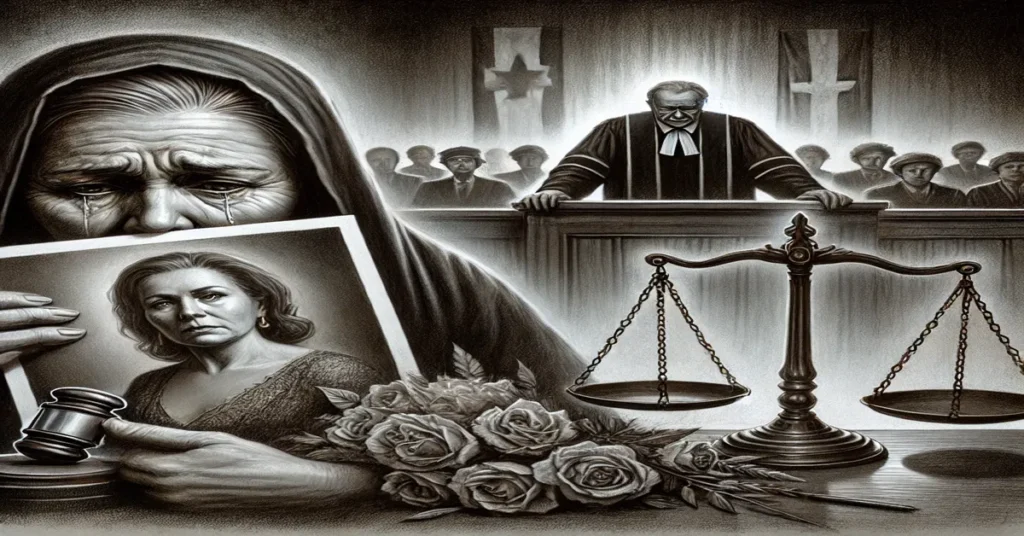The name Marianne Bachmeier became synonymous with one of the most extraordinary and tragic cases of the 1980s in Germany. Her story is not just about the profound grief and anger of a mother who lost her child but also about an act of vigilante justice that shocked the world and resonated across generations. Marianne’s actions have sparked long-standing debates about morality, the boundaries of justice, and the psychological limits of human endurance when faced with unimaginable tragedy. Her journey is one of raw human emotion interwoven with societal questions about justice systems and personal retribution. In this article, we delve deeply into her life, the heartbreak that led to her drastic actions, and the lasting impact of her choices. By exploring every facet of Marianne Bachmeier’s life and actions, we uncover not only the intricate complexities of justice but also the resilience and struggles of the human psyche when confronted with profound loss and moral dilemmas.
Who Was Marianne Bachmeier?
Marianne Bachmeier was an ordinary woman leading a quiet life in Lübeck, West Germany. Born on June 3, 1950, she faced her fair share of struggles even before the events that would forever define her life. A single mother, she worked hard to provide for her daughter, Anna. However, her life took a tragic turn on May 5, 1980, when her seven-year-old daughter was abducted and murdered.
Read: InvestmentTotal.com: Guide to Smart Financial Planning
The Tragedy of Anna Bachmeier
Anna Bachmeier’s life was cut short in one of the most heinous crimes in Lübeck’s history. On the morning of May 5, 1980, Anna and her mother had an argument. As a result, Anna decided to skip school, a decision that would ultimately lead to her abduction and murder. The man responsible was Klaus Grabowski, a known pedophile and convicted sex offender who had served time for his crimes.
Grabowski lured Anna into his home, where he held her captive for several hours. Tragically, he strangled her to death, placing her body in a box and leaving it by a canal. His motive was reportedly to prevent Anna from revealing his identity, as he feared returning to prison.
The Trial of Klaus Grabowski
Grabowski’s trial began in 1981, drawing significant public and media attention. Marianne Bachmeier’s grief was compounded by the legal proceedings, which brought to light the horrific details of Anna’s murder. Despite his past convictions and clear guilt, Grabowski’s defense team sought to mitigate his responsibility by claiming psychological issues.
During the trial, Marianne Bachmeier attended every session, grappling with the overwhelming emotions of loss and anger. On the third day of the trial, an extraordinary and shocking event occurred.
Marianne Bachmeier’s Act of Vigilante Justice
On March 6, 1981, Marianne Bachmeier smuggled a small pistol into the courtroom. As the trial progressed, she took out the weapon and shot Klaus Grabowski six times, killing him instantly. Her actions were not premeditated, as she later stated that she acted in a moment of overwhelming emotion and despair.
Marianne’s act of vigilante justice shocked the courtroom and the nation. While some sympathized with her pain and felt her actions were justified, others criticized her for taking the law into her own hands.
Legal Consequences for Marianne Bachmeier
Marianne Bachmeier’s actions led to her immediate arrest. She was charged with murder, unlawful possession of a firearm, and disrupting the legal process. Her trial began in 1983, and it became a focal point for discussions about morality, justice, and the limits of self-control.
The court ultimately found her guilty of manslaughter and unlawful possession of a firearm. She was sentenced to six years in prison but served only three. The relatively lenient sentence reflected the court’s acknowledgment of her extreme emotional distress and the extraordinary circumstances of the case.
Public Reaction and Media Coverage
The case of Marianne Bachmeier captivated not only Germany but the entire world. Media outlets debated whether her actions were an understandable response to an unimaginable tragedy or an unacceptable act of vigilantism. Public opinion was deeply divided, with many expressing sympathy for her loss and her emotional turmoil.
Television programs, newspapers, and magazines explored the case in detail, highlighting the moral and ethical dilemmas it posed. Marianne’s story became a symbol of the complexities surrounding justice, victimhood, and personal grief.
The Psychological Impact on Marianne Bachmeier
The events of 1981 left a lasting impact on Marianne Bachmeier’s life. In interviews, she spoke about the immense grief and guilt she felt, not only for losing her daughter but also for her actions in the courtroom. She struggled with public scrutiny and her own sense of morality.
In the years following her release, Marianne sought a quieter life, away from the public eye. She moved to Nigeria for a period, where she worked as a social worker, and later returned to Germany. Her life was marked by continued reflection on the choices she made and the loss she endured.
Marianne Bachmeier’s Legacy
Marianne Bachmeier passed away on September 17, 1996, at the age of 46, after battling cancer. Her story remains one of the most extraordinary and debated cases in modern legal history. It has inspired books, documentaries, and discussions about justice and morality.
Her legacy is a poignant reminder of the depth of a mother’s love and the devastating impact of loss. While her actions remain controversial, they continue to provoke thought and dialogue about how society deals with grief, justice, and retribution.
Broader Implications of the Marianne Bachmeier Case
1. Debates on Vigilante Justice
The case reignited debates about the role of vigilantism in society. While some argued that her actions were an emotional response to a failing justice system, others believed that such acts undermine the rule of law.
2. The Justice System’s Role
The case also highlighted the challenges faced by the justice system in handling emotionally charged cases. Questions about victim rights, psychological evaluations, and the adequacy of legal procedures came to the forefront.
3. Media’s Influence
The extensive media coverage of the case demonstrated the power of journalism to shape public opinion and spark widespread discussions. Marianne’s story became a focal point for exploring broader societal issues.
Conclusion
The story of Marianne Bachmeier is a complex and tragic tale of love, loss, and the quest for justice. Her actions on that fateful day in 1981 continue to provoke debate and reflection. While her decision to take the law into her own hands remains controversial, it serves as a stark reminder of the profound impact of grief and the human desire for retribution.
Marianne’s story is not just about tragedy but also about the resilience of the human spirit in the face of unimaginable pain. It compels us to think about the nature of justice, the boundaries of morality, and the strength it takes to endure loss.
FAQs
1. Who was Marianne Bachmeier?
Marianne Bachmeier was a German woman who became widely known for killing Klaus Grabowski, the man who murdered her daughter, Anna.
2. What happened to Anna Bachmeier?
Anna was abducted and murdered in 1980 by Klaus Grabowski, a convicted pedophile and sex offender.
3. Why did Marianne Bachmeier shoot Klaus Grabowski?
Marianne shot Klaus Grabowski during his trial in 1981, driven by overwhelming grief and anger over her daughter’s murder.
4. What was Marianne Bachmeier’s sentence?
She was sentenced to six years in prison for manslaughter and unlawful possession of a firearm but served only three.
5. How did the public react to Marianne Bachmeier’s actions?
Public opinion was divided, with many sympathizing with her grief while others criticized her for taking the law into her own hands.
6. What is Marianne Bachmeier’s legacy?
Her story remains a subject of debate, symbolizing the complexities of justice, grief, and the human capacity for resilience.







